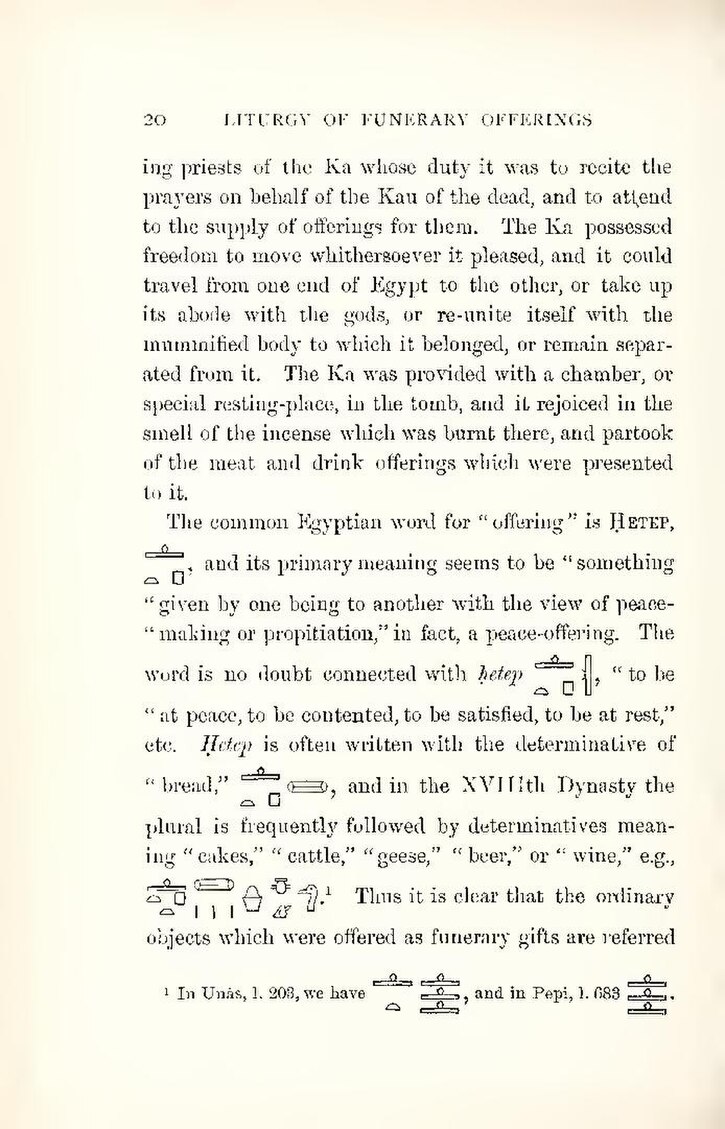ing priests of the Ka whose duty it was to recite the prayers on behalf of the Kau of the dead, and to attend to the supply of offerings for them. The Ka possessed freedom to move whithersoever it pleased, and it could travel from one end of Egypt to the other, or take up its abode with the gods, or re-unite itself with the mummified body to which it belonged, or remain separated from it. The Ka was provided with a chamber, or special resting-place, in the tomb, and it rejoiced in the smell of the incense which was burnt there, and partook of the meat and drink offerings which were presented to it.
The common Egyptian word for “offering” is Ḥetep,
| |
, and its primary meaning seems to be "something given by one being to another with the view of peace-making or propitiation," in fact, a peace-offering. The word is to doubt connected with ḥetep
| |
, "to be at peace, to be contented, to be satisfied, to be at rest," etc. Ḥetep is often written with the determinative of "bread,"
| |
, and in the XVIIIth Dynasty the plural is frequently followed by determinatives meaning "cakes," "cattle," "geese," "beer," or "wine," e.g.,
|
.[1]
- ↑ In Unȧs, l. 203, we have
, and in Pepi, l. 683
![X1 [t] t](/w/extensions/wikihiero/img/hiero_X1.png?f2a8c)






